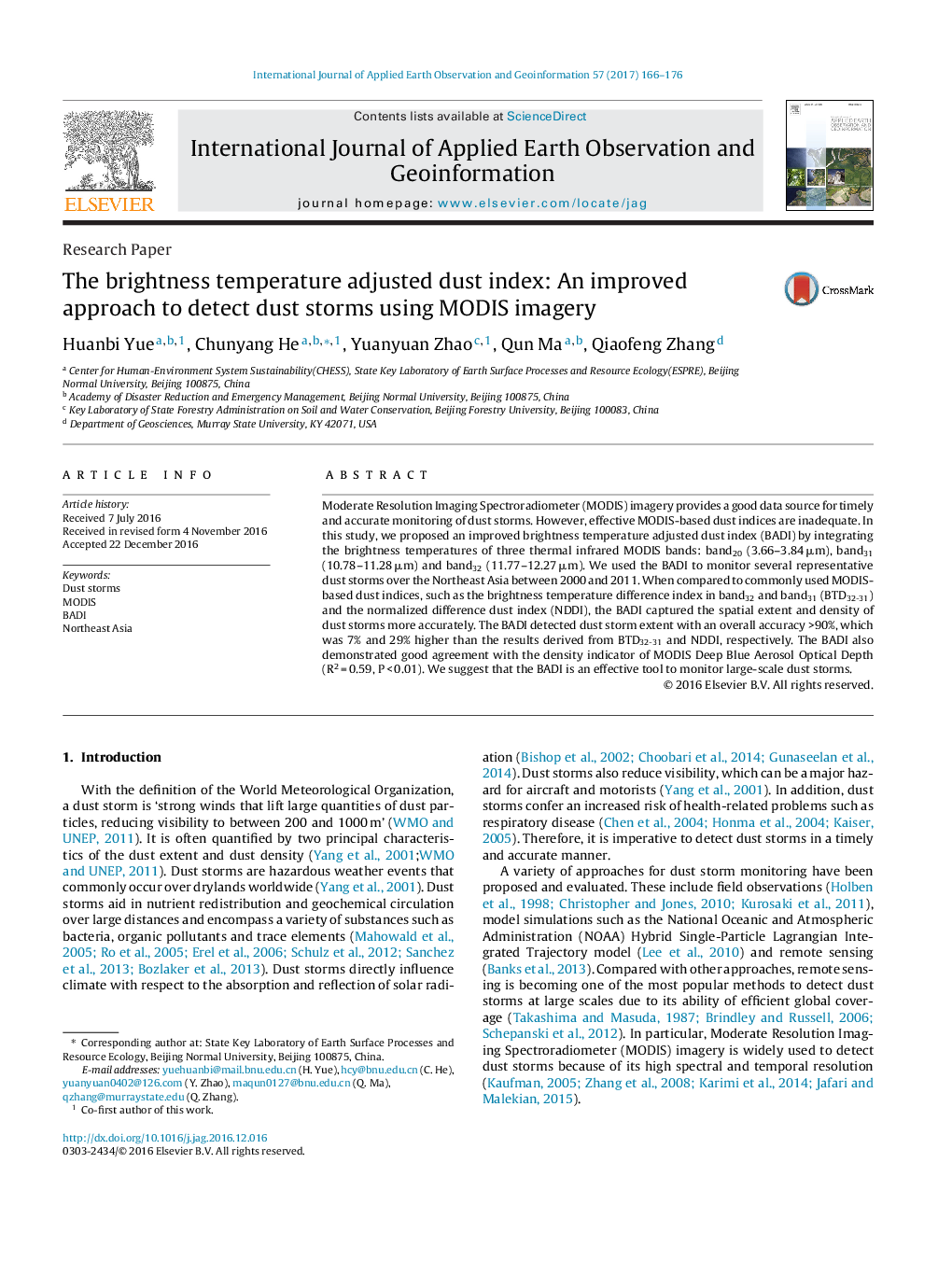| Article ID | Journal | Published Year | Pages | File Type |
|---|---|---|---|---|
| 5755561 | International Journal of Applied Earth Observation and Geoinformation | 2017 | 11 Pages |
Abstract
Moderate Resolution Imaging Spectroradiometer (MODIS) imagery provides a good data source for timely and accurate monitoring of dust storms. However, effective MODIS-based dust indices are inadequate. In this study, we proposed an improved brightness temperature adjusted dust index (BADI) by integrating the brightness temperatures of three thermal infrared MODIS bands: band20 (3.66-3.84 μm), band31 (10.78-11.28 μm) and band32 (11.77-12.27 μm). We used the BADI to monitor several representative dust storms over the Northeast Asia between 2000 and 2011. When compared to commonly used MODIS-based dust indices, such as the brightness temperature difference index in band32 and band31 (BTD32-31) and the normalized difference dust index (NDDI), the BADI captured the spatial extent and density of dust storms more accurately. The BADI detected dust storm extent with an overall accuracy >90%, which was 7% and 29% higher than the results derived from BTD32-31 and NDDI, respectively. The BADI also demonstrated good agreement with the density indicator of MODIS Deep Blue Aerosol Optical Depth (R2 = 0.59, P < 0.01). We suggest that the BADI is an effective tool to monitor large-scale dust storms.
Keywords
Related Topics
Physical Sciences and Engineering
Earth and Planetary Sciences
Computers in Earth Sciences
Authors
Huanbi Yue, Chunyang He, Yuanyuan Zhao, Qun Ma, Qiaofeng Zhang,
